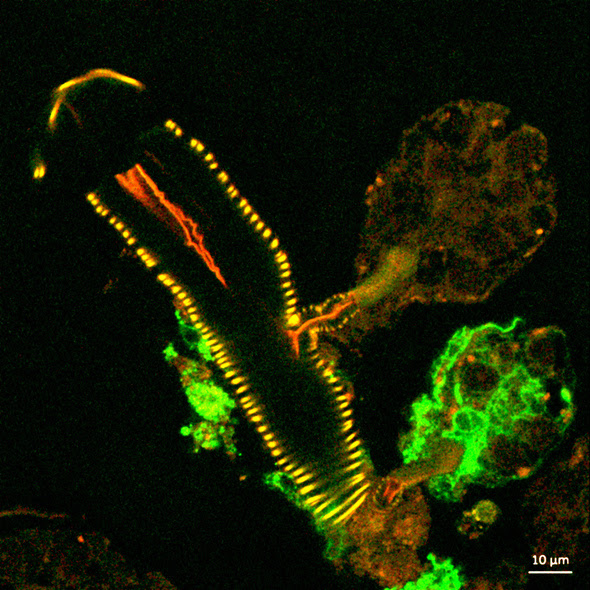 | |
Tuesday, Jan. 29, 2019NIAID scientists explore tick salivary glands as tool to study virus transmission and infection
The salivary glands of some tick species could become important research tools for studying how viruses transmit from ticks to mammals, and for developing preventive medical countermeasures. Tick salivary glands usually block transmission, but a new study conducted by NIAID scientists focuses on the role of salivary glands in spreading flaviviruses from black-legged ticks (Ixodes scapularis) to mammals. The findings help identify transmission pathways that potentially could be blocked with a countermeasure. The group also is assessing how viruses grow in cells of the cultured tick midgut to help identify different viruses that can grow in black-legged ticks. Flaviviruses include dengue virus, Zika virus, West Nile virus, yellow fever virus, Powassan virus and several others. |
martes, 29 de enero de 2019
NIH Scientists Explore Tick Salivary Glands as Tool to Study Virus Transmission and Infection | NIH: National Institute of Allergy and Infectious Diseases
NIH Scientists Explore Tick Salivary Glands as Tool to Study Virus Transmission and Infection | NIH: National Institute of Allergy and Infectious Diseases
Suscribirse a:
Enviar comentarios (Atom)






















.png)










No hay comentarios:
Publicar un comentario